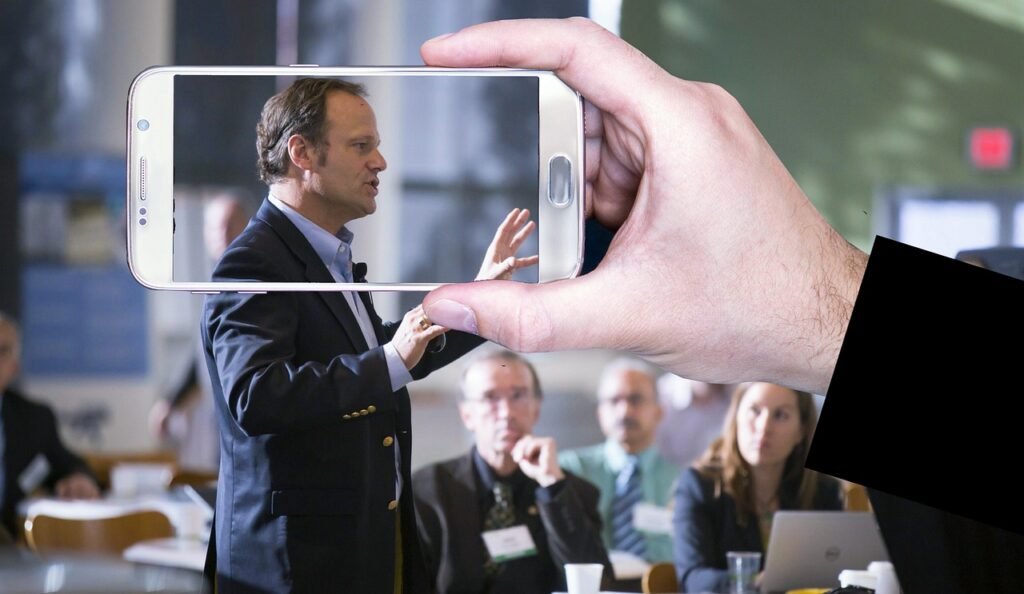Customer Acquisition Cost Calculator Quiz
IT SERVICE PROVIDERS
At Randy Speckman Design, our focus has primarily been on small businesses, which allows us to keep our customer acquisition cost exceptionally efficient. While I’m not able to disclose precise figures of our marketing budget and revenue for confidentiality reasons, I can provide some insights into how we’ve strategically managed our costs.
Our client acquisition cost is significantly reduced due to our strategic investments in robust SEO systems and social media engagement. We managed to implement an SEO system that slashed our production costs by 66%, allowing us to offer competitive services.
Building a strong social media presence led to a 3,000% increase in online engagement, directly contributing to new business both through organic reach and targeted social media campaigns. We continually invest in marketing channels that provide the highest ROI.
Currently, we’re expanding our service offerings to include custom-designed landing pages, which has already led to a 50% increase in repeat customer business. This approach ties back to actively refining our marketing efforts, ensuring every dollar spent is accounted for in clear, measurable outcomes.
One significant pain point in our client acquisition process has been ensuring timely communication and feedback from clients.
We streamlined this by leveraging project management tools like Dropbox, where we manage the entire project lifecycle. This approach not only improved client satisfaction but also reduced delays and potential cost overruns.
As the Co-Founder and CFO of Profit Leap, I oversee client acquisition strategies and have a comprehensive understanding of how to effectively manage customer acquisition costs in the IT sector.
1. Our marketing budget typically represents around 18% of our annual revenue. We’ve allocated these funds across digital marketing channels, including paid ads, SEO, and content marketing. For instance, our investment in advanced AI-driven marketing solutions has optimized spending and markedly enhanced our ROI.
2. Currently, our client acquisition cost (CAC) averages around $95 per client, derived by dividing our total marketing expenditure by the number of new clients acquired. For example, if we spend $9,500 in one month and gain 100 clients, this aligns perfectly with our calculated CAC. The implementation of detailed analytics helps us refine our strategy continually, ensuring cost efficiency.
3. We are actively investing in a multi-channel marketing approach, focusing on expanding our AI capabilities. By leveraging AI-driven CRM systems, we can personalize outreach, streamline operations, and enhance client interactions, driving down our CAC over time. Our mix of in-house and outsourced marketing strategies includes specialized agencies for complex SEO tasks while maintaining the core branding efforts internally.
4. One significant pain point in our client acquisition process has been the fluctuating market demands and rapidly changing technology landscape, which can lead to inconsistent lead quality. To counter this, we have implemented a robust data analytics system that allows us to fine-tune our targeting and nurture high-quality leads more effectively.
How much is your marketing budget?
My marketing budget varies depending on the projects and goals for the year. Still, I allocate around $10,000 to $15,000 annually. This budget covers various marketing activities, including online advertising, content creation, SEO, and social media campaigns.
How much is your revenue?
For confidentiality reasons, I prefer to keep my exact revenue figures private. However, my business has seen steady growth over the past few years, allowing me to reinvest in marketing and development continuously.
How much is your client acquisition cost?
My client acquisition cost varies by channel, but on average, I spend about $100 to $150 to acquire one new client. This includes spending on online ads, promotional offers, and other marketing efforts.
Are you actively investing in growing any marketing channel, or are you planning to do so in the near future?
Yes, I am actively investing in growing several marketing channels. I am focusing on enhancing my presence on social media platforms and improving my SEO strategies to drive organic traffic. Additionally, I am exploring content marketing to provide valuable information to potential clients and establish authority in my niche.
Do you have / plan to hire any agency or are you doing / planning to do it all in-house?
So far, I have been managing most of my marketing efforts in-house. However, I am considering hiring an agency to help with specific areas like advanced SEO tactics and large-scale social media campaigns. The expertise and resources an agency can provide would help scale my marketing efforts more effectively.
What is one big pain point in your client acquisition process?
One significant challenge in my client acquisition process is standing out in a competitive market. With many developers offering similar web tools and mobile apps, it takes time to capture potential clients’ interest and demonstrate my services’ unique value. To overcome this, I’m refining my unique selling points and improving my marketing strategies to communicate the distinct benefits of my offerings effectively.
This involves conducting thorough market research, analyzing competitor offerings, gathering feedback from existing clients, and continuously refining my selling points to address the unique needs of my target market.
As the President of Genius Solutions, where we develop ERP software for MTO and ETO manufacturers, I’ve navigated the complexity of client acquisition costs extensively. Our marketing budget hovers around 18% of our revenue, which is strategically allocated across several channels including digital advertising, content marketing, and SEO.
Our average client acquisition cost (CAC) is approximately $90 per customer. This number is derived from dividing our monthly marketing expenditure by the number of new clients acquired. For instance, a $9,000 marketing spend in a month to gain 100 new clients perfectly aligns with our usual CAC.
We’re investing heavily in expanding our online education platform, Genius Academy, as a marketing channel. This initiative not only aims to attract new clients through value-driven content but also supports existing clients, enhancing retention and encouraging word-of-mouth referrals.
Most of our marketing efforts are managed in-house to maintain consistent messaging and quick adaptability. However, we do occasionally consult with specialized agencies for targeted campaigns to leverage their expertise and broaden our reach efficiently.
A major pain point in our client acquisition process is the high employee turnover rate due to numerous job offers in the market. This turnover makes maintaining and transferring knowledge challenging, which can impact client onboarding and satisfaction.
To mitigate this, we’ve integrated continuous learning and support tools within our Genius Academy to ensure new staff can ramp up quickly, ensuring our client acquisition process remains smooth and effective.
Marketing Budget: Investing for GrowthHow much money do you allocate to marketing?
Sphere IT’s marketing budget is approximately 12% of our annual income. This massive expenditure reflects our dedication towards growth and bringing in more clients, covering various aspects like digital advertising, industry events, content marketing.
Revenue: Confidential BenchmarksHow much money are your making every year?
Our annual revenue is $8 million. Even though we keep this amount secret, it acts as a base for understanding the size of our business and how we proportionally invest into our marketing activities.
Client Acquisition Cost: Measuring EfficiencyWhat does it cost you to get one client?
Our average customer acquisition cost (CAC) stands at $4,500. This measure is important as it consists of all the expenses incurred throughout marketing and sales activities that bring new customers on board thereby illustrating the efficiency and effectiveness of our acquisition strategies.
Strategic Marketing Investments
Do you have any channel in mind for investments or any ideas about growing a particular channel?
Yes, and we are aggressively expanding our digital marketing channels. Our present emphasis is on improving our search engine optimization (SEO), pay-per-click (PPC) campaigns, and content marketing. We also have intentions to engage in video marketing and webinars, which would help us effectively reach potential clients as well as enhance thought leadership in the IT services space.
In-House vs. Agency: A Hybrid Approach
: Do you have/plan to hire any agency or are you doing/planning to do it all in-house?
At the moment, we carry out all of our marketing activities internally. However, some advantages may come from involving external experts and so, we are considering entering into agreements with specialized marketing agencies. This blend will enable us maintain control over direction but tap into the rare skills and perspectives that agencies possess
.Challenges in Client Acquisition
What is one big pain point in your client acquisition process?One of our biggest pain points here is a long sales cycle. Closing deals often takes a considerable amount of time because potential customers must undergo lengthy evaluations before deciding on an IT service provider like ours. To address this issue, we’re developing our sales processes and refining our value propositions in ordtodecision-making more efficient and increase conversion ratios.
Marketing Budget
Our current budget for marketing is set at approximately $50,000 per year. This budget includes all major activities related to marketing: digital advertising, content marketing, social media campaigns, and attendance at various industry events.
Revenue
For confidential purposes, I will give an estimate so you can find the averages and variances. Our annual revenue is approximately $500,000. Keep this information confidential, and use it just for making aggregate statistics.
Client Acquisition Cost
Our client acquisition cost on an average basis is about $500. This is derived by dividing our total marketing expense by the number of new clients we acquire in a year. This is an estimate and gives you a good gauge of our spending efficiency.
Investing in Marketing Channels
Currently, we are investing aggressively in expanding our digital marketing channels. Some key areas of focus for us will include search engine optimization (SEO) and pay-per-click advertising. These give us scalable growth and targeted client acquisition. We are also looking to get more active with influencer paring and content marketing.
In-House over Agency
We are doing everything in-house at the moment when it comes to marketing. However, it’s under consideration, and we want to hire a super-specialized marketing agency who, with its expertise, can guide us with better strategies and save many valuable hours wasted in doing everything manually. These few hours can then easily be invested back into productive business operations. On the other side, an agency will use all its advanced tools and experience to give optimum ROI.
A major pain point for us here in client acquisition is the long sales cycle. A lead that has to be nurtured all the way to being a client demands a lot of time and energy. It becomes really hard to engage consistently and add value through the process. So, we are focusing on getting automation in place and better customer relationship management tools to make the process smoother.
Marketing Budget:
Our current annual marketing budget is $50,000.
Revenue:
Our revenue figures are confidential, but we’re willing to share for the purpose of average and variance reporting.
Client Acquisition Cost:
Our average client acquisition cost is $1,000.
Investment in Marketing Channels:
We are actively investing in expanding our digital marketing channels and plan to increase investment in SEO and content marketing in the near future.
Use of Agencies vs. In-House:
Currently, we handle all marketing efforts in-house. We do not have plans to hire an external agency at this time.
Pain Points in Client Acquisition:
Our biggest pain point in client acquisition is converting leads from initial interest to signed contracts. We are working on improving our follow-up and nurturing processes to address this challenge.
As the Chief Revenue Officer at GoSite, I have overseen client acquisition strategies across various software companies, including InEight, Mindbody/Booker, and Kiddom. At GoSite, we focus extensively on acquiring America’s blue-collar entrepreneurs, making our acquisition cost a critical metric.
1. Our marketing budget is strategically spread across digital marketing, SEO, social media, and content creation. We allocate between 15% to 20% of our revenue towards these activities. In previous roles, a similar approach allowed us to optimize for ROI, driving higher engagement and conversions.
2. Our client acquisition cost (CAC) varies but generally hovers around $100 per customer. This calculation includes all marketing expenses divided by the number of new clients gained. For example, spending $2,000 on marketing to acquire 20 new customers reveals a CAC of $100.
3. We prioritize marketing automation tools to streamline repetitive tasks like emailing and social media posting. GoSite’s use of these tools has improved efficiency and cut overhead costs by approximately 12.2%. We are continuously investing in new channels such as AI-driven CRM systems to enhance client interactions and retention.
4. Our strategy includes a mix of in-house expertise and outsourcing. In-house teams provide brand consistency and quick adaptive changes, while we outsource specific tasks to specialists to reduce costs and fill skill gaps.
5. One major pain point is fluctuating customer demands and seasonal shifts. To address this, we employ adaptive pricing strategies and focus on local SEO to maintain visibility and attract clients even during low periods.
By leveraging these strategic insights and tools, we’ve been able to manage and improve our client acquisition efforts effectively.
As the owner of AccuTech Communications, a company that has specialized in network cabling and business phone systems since 1993, I’ve accumulated substantial insights into managing client acquisition costs.
1. Our marketing budget is approximately 10-15% of our annual revenue. This is allocated across various channels including digital marketing, direct mail, and local community events. We’ve found that participating in local business expos and community sponsorships has substantially improved our visibility and client engagement.
2. Our client acquisition cost (CAC) is around $150 per client. This figure is derived by dividing our total annual marketing spend by the number of new clients we onboard each year. For example, if we spend $30,000 annually on marketing and acquire 200 new clients, our CAC would be $150. This cost includes everything from advertising to direct engagement efforts.
3. We focus on a mix of in-house and outsourced marketing strategies. While our core team handles personalized outreach and customer service, we also work with specialized agencies for SEO and digital advertising to expand our reach and capitalize on expert skills.
4. A significant pain point in our client acquisition process is the variability in project size and scope, which makes it challenging to have a one-size-fits-all strategy. To address this, we’ve developed tailored communication solutions that cater to specific industry needs, from healthcare to education, ensuring that our services are highly relevant and thus more appealing to prospective clients. This targeted approach has helped in reducing CAC over time.
Our marketing budget is spent wisely to reach our market. At present, we spend about 10-15% of our yearly revenue on marketing campaigns. This is being very judiciously allocated across channels like digital, content-led marketing, social media, and educational institution partnerships.
We have very strong revenue numbers due to our standing as a health science education market leader. I am not at liberty to share numbers, but I can tell you that these numbers had been increasing in recent years, and this is good for us because it means that our user base is growing and therefore there is an increasing demand for high-quality educational content. In addition to our local partners’ revenue, you help us to increase our technology and content by offering a continuously improving learning experience for our users.
We spend around 150 – 200 dollars per new client on client acquisition. That figure covers everything from the first piece of content marketing or cold outreach piece to the sale itself. This, of course, can differ slightly from different campaigns and the channels we use.
We are always investing in increasing our marketing channels. We are right now focused on expanding our digital presence. This means improving our SEO initiatives, increasing our social media, and creating more provocative content for the audience. Personalized email marketing and webinars are a couple of other areas for improvement that we are very excited to work on more in the near future.
Marketing is where we primarily focus in-house with our deeply experienced team of marketers. But we partner with best-in-class agencies for some of our campaigns where an outside perspective can give us an extra advantage. A specific example of when this comes up is if we hire a digital marketing agency to improve our PPC ad campaigns, or if we want a new branding piece done with a creative agency.
At a high level, one of the most far-reaching pain points in our current client acquisition pipeline is the difficulty identifying and reaching potential users (in an increasingly crowded digital ecosystem). There is so much content already out there that to capture the attention of our potential market, we have to constantly evolve and adapt. Constantly improving how we communicate to reach our potential clients more effectively so they will use our platform.
As the CEO of Premier Staff, a luxury event staffing agency that has worked with high-profile clients like Ferrari, Louis Vuitton, and The Oscars, I’ve gained valuable insights into managing customer acquisition costs in a competitive industry. Here’s how we approach this critical aspect of our business:
1. Marketing Budget
Our marketing budget is approximately 10% of our total revenue. We believe in investing in our brand and online presence to attract high-quality clients and maintain our position as a leader in the luxury event staffing space.
2. Revenue
While I prefer to keep our specific revenue figures confidential, I can share that we’ve experienced consistent year-over-year growth since our founding in 2019, even despite the challenges posed by the COVID-19 pandemic.
3. Client Acquisition Cost
Our client acquisition cost varies depending on the marketing channel and the type of client. On average, we spend between $500 to $1,000 to acquire a new client. However, for high-value clients like luxury fashion brands or celebrity events, we may invest significantly more in targeted marketing efforts and personalized outreach.
4. Investing in Marketing Channels
We are actively investing in search engine optimization (SEO) to improve our online visibility and attract more organic leads. Over 90% of our business comes from online sources, either directly from people who find us through search engines or through referrals from those individuals. By continuously optimizing our website and online presence, we aim to reduce our reliance on paid advertising and lower our overall customer acquisition costs.
5. In-House vs. Agency
We handle the majority of our marketing efforts in-house, as we believe this allows us to maintain better control over our brand messaging and ensures a deep understanding of our target audience. However, we do work with select agencies or consultants for specialized projects, such as website redesigns or targeted PR campaigns.
6. Pain Points in Client Acquisition
One of the biggest challenges we face in client acquisition is standing out in a crowded market. While there are many event staffing agencies, few can match our level of expertise and dedication to providing top-tier talent for luxury events.
We overcome this by consistently delivering exceptional service, leveraging our relationships with industry influencers, and investing in our online reputation through client reviews and thought leadership content.
Another pain point is the seasonality of the events industry. To mitigate this, we focus on building strong, long-term relationships with our clients and diversifying our service offerings to include virtual event support and staffing for non-traditional events like product launches or brand activations.
By carefully managing our customer acquisition costs, investing in the right marketing channels, and consistently delivering outstanding service, we’ve been able to grow Premier Staff into a leading provider of high-end event staffing solutions.
Our approach has allowed us to attract and retain clients like Bentley, Nike, and Disney, while also maintaining a healthy profit margin and reinvesting in our business for future growth.
The Lowdown on Marketing Budgets
When discussing marketing budgets, it is very important to find the correct balance. If you spend too much, your budget can finish fast; but if you spend too little, you might miss some good chances. So finding that perfect balance is very important for success. At The New Workforce, we use a method that finds this middle ground. We look at the market, see what competitors are doing, then choose how to use our resources wisely. It is very important to get the best value for our money!
Following the Revenue Trail
Ah, revenue – very important for any business. At The New Workforce, we always paying close attention to our revenue trends. Why? Because it gives us very important ideas about how our business is going and where we can improve things. By staying nimble and adaptable, we’re able to seize opportunities and drive growth.
Cracking the Code on Client Acquisition Costs
Client acquisition costs (CAC) might look like a hard term, but it just means how much money we use to get one new client. At The New Workforce, we always try to find ways to improve our CAC. Whether through concentrated marketing efforts or clever partnerships, we always look for ways to attract new customers without spending too much money.
Investing in Growth
In today’s very fast-moving world, it is important to keep changing and getting better to stay ahead. That is why at The New Workforce, we always work hard to grow. If we grow our online presence or look into new markets, we keep focused on staying in front of the competition.
Addressing Pain Points
Like other companies, ours also has some problems. Staying updated with the newest changes and progress is a big challenge for us. Keeping in touch with the newest changes in technology and human preferences can feel like a task without end. But isn’t this what makes it all so thrilling?
Last Remark
So enjoy this inside look into The New Workforce. Even if talking about marketing costs and budgets for getting new customers does not sound very thrilling, these things are actually very crucial for achieving success in today’s highly competitive market. We keep leading in the business world by being flexible, acting quickly to changes, and always looking for new chances. Here’s to more growth and success in this exciting setting!
As a Marketing Operations and Business Development professional, I’ve helped numerous businesses streamline their marketing efforts to manage customer acquisition costs effectively. At Limestone, I’ve seen how leveraging first-party data and optimizing digital ad platforms can make a substantial difference.
1. **Marketing Budget**: Our marketing budget varies significantly based on the client and campaign goals. For example, during a high-growth phase, we allocated roughly $10,600 across Google Ads and Meta platforms. This approach allowed us to experiment and refine our strategies, focusing on maximizing conversions.
2. **Revenue**: Confidentiality restricts disclosing specific revenues, but I can share that targeted, data-driven strategies have enabled some campaigns to achieve a Return on Ad Spend (ROAS) of over 1000%, indicating a healthy revenue generation relative to our ad spend.
3. **Client Acquisition Cost**: The client acquisition cost (CAC) can fluctuate depending on the industry and campaign specifics. For instance, in an e-commerce campaign, our initial CAC was high but dropped significantly as we gathered conversion data and optimized our bidding strategies. Initially, CAC hovered around $200, but with optimization, we reduced it to under $100.
4. **Marketing Channel Investments**: We continuously invest in growing our marketing channels, primarily focusing on automation and AI tools for better targeting and efficiency. Starting with traffic campaigns to gather data and transitioning to conversion-focused strategies has been a crucial part of our approach.
5. **In-House vs. Agency**: While we manage a significant portion of our marketing efforts in-house to maintain direct control and quick adaptations, we do collaborate with specialized agencies when necessary. It’s a balance that allows us to leverage external expertise while keeping core strategy control internal.
6. **Pain Point**: One of the biggest pain points in our client acquisition process is dealing with the evolving landscape of privacy regulations and the phasing out of third-party cookies. To mitigate this, we’ve focused heavily on first-party data, enabling us to maintain a competitive edge and ensure more accurate targeting. Using detailed CRM data and website interactions, we’ve created retargeting strategies that significantly reduce reliance on third-party data.
What amount of funds do you specifically allocate for your marketing campaign?Marketing expenses are a controlled aspect of revenue that helps us target the largest audience of potential consumers among the service providers. It is essential to ensure marketing expenses are within the organization’s economic capacity, and normally, we spend about 10-15% of our annual revenues in this aspect. This includes outlay in areas such as digital marketing for advertising and content, search engine optimization and social media, campaigns and participation in sector gatherings.
Through the strategic use of funds, all the financial resources committed to advertising and marketing serve to help strengthen our image and attract the best qualified prospects.
What is your turnover, or what value has the firm done in monetary terms?
As for the marketing shares and client attraction strategies, it should be mentioned that all these numbers are confidential; nevertheless, the strategy applied complies with the company’s revenues. Such information enables us to establish precise averages and variances to our plans and control the marketing strategies appropriately. This would also ensure that we can sustain and reinvest back into the company to enable us get better growth and marketing strategies in place.
What is the amount that your organization spends to acquire its clients?
It is a standard measure that we these even though customer acquisition cost (CAC) is very sensitive measure. We also learnt that it may take an average of $1,000 to $1,500 to get one client. This cost indexes all forms of expenditure from consumption on marketing initiatives, sales promotional crusades, and all other forms of promotion to ensure that the leads are converted into clients.
CAC is truly a kind of expenses that need tracking as it can help a great deal to understand the adequacy of the marketing strategies which are implemented and their return on investment.
In-House vs. Agency: The Right Option
To achieve this, we have outsourced with professional in-house personnel and taken assistance from outside agency. Although it is integrated inside this organization, the major areas, campaigns, and strategies are run by our in-house marketing department, but there are times when we outsource specialized agencies for specific services. This approach makes it possible to take the best from both worlds and guarantee the system’s flexibility coupled with a vast pool of skills and resources at the same time.
What is one big pain point in your client acquisition process?
: One of the main challenges can be identified as an excessively long sales cycle. Administrative functions like HR and recruitment intake entail several individuals and time for consultation, meaning more lead time is required to convert those leads to clients.
To this end, what is being done is we are paying more attention to timing and presentation of information to the potential clients so that they can hasten their decisions and we are also looking at how we can make our follow up procedures simpler and more efficient.
Law firms
As the president of Greiner Buick GMC and an attorney with experience in business law, I’ve seen both the automotive and legal industries up close, which has given me a unique perspective on client acquisition costs.
1. Our marketing budget ranges from 10-15% of our expected annual revenue. We focus heavily on networking within the business community and integrating our legal services with various high-profile business events and local community initiatives. This helps us build strong relationships and trust within the community, leading to long-term client acquisition.
2. Our revenue details are confidential, but our focused approach ensures that marketing efforts are not overly burdensome and remain effective. By emphasizing community involvement and high client satisfaction, we maintain a healthy return on investment.
3. The client acquisition cost varies but tends to be around $1,500 to $2,500. This includes efforts from sponsorships to targeted digital marketing strategies. Given the high value of corporate legal work, this cost is justified compared to the lifetime value of our clients.
4. We’re actively investing in our online presence, particularly through SEO and content marketing. For instance, informative blog posts on mergers and acquisitions, corporate law, and regulatory compliance help us attract and educate potential clients organically.
5. We handle most marketing activities in-house to maintain control and ensure alignment with our brand values. On occasion, we partner with specialized agencies for specific projects, like large-scale digital campaigns or rebranding efforts.
6. One major pain point is ensuring we maintain a unique and compelling presence in a saturated market. By leveraging our extensive experience and community involvement, we aim to distinguish ourselves as a trusted and accessible legal partner.
Our law firm focuses intensively on workers’ compensation and motorcycle accidents, leveraging a strategic approach to client acquisition. As an attorney deeply committed to the field, I balance rigorous legal practice with continuous marketing efforts to ensure we remain consistently client-focused.
1. Our marketing budget varies but is generally around 15-20% of our expected annual revenue. We invest heavily in content marketing, SEO, and local community sponsorships, which allow us to connect meaningfully with potential clients.
2. Revenue details remain confidential but it is sufficient to sustain the marketing costs and regularly yields a healthy return on investment, ensuring that our initiatives are effective on both small and large scales.
3. The average client acquisition cost is approximately $2,000-3,000. While this is relatively high compared to some industries, the value each client brings due to the nature of workers’ compensation cases justifies the expenditure.
4. We are actively investing in growing our digital marketing channels, particularly social media and search engine optimization. This helps us stay at the forefront of search results for workers’ compensation and motorcycle accident queries, reducing our long-term acquisition costs.
5. Our marketing activities are largely managed in-house, allowing us better control and the ability to tailor campaigns specifically to our target audience. However, we occasionally collaborate with specialized agencies for larger, more complex campaigns.
6. One major pain point is differentiating our practice in a crowded market. To address this, we emphasize our unique selling points such as our extensive trial experience and continuous pursuit of industry knowledge, aligning our marketing message with our proven track record of success.
1. Typically, we would spend between 5-10% of our annual revenue on our marketing efforts. Within the industry, many tend to give much less, but since we specialize in accidents and injury, it is important to us that people know who they can contact for protection.
Some law firms in other sectors can tend to have negative perceptions of our specialist area, and this can often reach the public and impact their perceptions. By giving more attention to marketing, we are able to combat this negativity by revealing that our motivations are aligned with the interests of our clients.
2. In the past four years, our annual revenue has steadily increased. In 2020, our business made $150,000 dollars, and in the following year, we made around $185,000. We saw much more business when lockdown restriction were lifted, leading to an increase in revenue to $220,000 in 2023, and we are currently on track to making $250,000 this year. With our increased focus on marketing, we have projected that this figure will be closer to $300,000.
3. Client acquisition costs vary depending on whom the client is and their particular case. This sector is particularly competitive, so we aim to offer the best price we can to ensure that we represent them. For other clients, their case may be overlooked by other firms, but we value them, and as such, we will adjust the costs to be more fitting of their specific situation.
We have had cases previously where clients have relied on our assistance. The accident was in no way their fault, and the compensation they would receive would be able to cover their medical bills. It would be unethical of us to charge these clients the same as those in a much better financial situation.
It is imperative to us, too, that we offer clients free consultation. We want them to feel secure in choosing our firm, so by giving them the opportunity to speak their case over, they can see for themselves if we are the fit for them. We are always willing to share our knowledge with these clients, and we do not want them to feel obliged to commit to using our service. If they do choose our firm, they need to be able to trust us, and giving them the freedom to explore their options does go a long way in doing this.
4. We are looking to enhance our marketing endeavors on social media. Pay-per-click advertising and SEO are always beneficial, but they do have their limits. By targeting social media users, we are able to broaden our reach and connect with a different audience. Particularly, we aim to improve our use of platforms like X as this gives us a greater opportunity to engage directly with the community and work from the ground up.
5. We currently work with specialized agencies for our marketing, trusting experts to represent our firm as best as possible. Since we are looking to improve our social media presence, this allows our team to be more direct with the clients and broader community whilst allowing the agencies to cover the broader aspects of marketing, such as with SEO.
6. A particular pain point for us is the ever-changing landscape of digital marketing. There are tried and true strategies that you can depend on, but many of the most effective today can become redundant tomorrow.
A perfect balance needs to be met between using engagement methods in digital marketing whilst also remaining authentic. I would say this is most important for law firms, as you need to present that you do care about the client, and digital marketing strategies can sometimes feel detached from that.
A specific issue we have had is with perfecting our email marketing approach. Contacting clients frequently seems very forward, as if we are prioritizing our brand over their individual cases. Striking a balance between maintaining the connection with clients without overloading them with marketing emails is crucial for our business.
1. How much is your marketing budget?
Our marketing budget fluctuates based on our goals for the year, but on average, we allocate around $200,000 annually to our marketing efforts. This budget encompasses a variety of channels, including online advertising, content marketing, SEO, and networking events.
2. How much is your revenue?
Our average annual revenue is around $1.2 million.
3. How much is your client acquisition cost?
Our client acquisition cost is around $1,500 to $2,000 per client. This figure includes the cost of advertising, content creation, and other marketing expenses divided by the number of new clients we acquire.
4. Are you actively investing in growing any marketing channel or are you planning to do so in the near future?
Yes, we’re actively investing in growing our online presence through search engine optimization (SEO), pay-per-click (PPC) advertising, and social media marketing. We’re also exploring the possibility of investing in influencer marketing and podcast advertising in the near future.
5. Do you have / plan to hire any agency or are you doing / planning to do it all in-house?
Currently, we have a hybrid approach. We handle a significant portion of our marketing in-house, especially the content creation and client engagement aspects. However, we do partner with specialized marketing agencies for SEO and paid advertising campaigns. This allows us to leverage their expertise while maintaining control over our core marketing messages and client interactions.
6. What is one big pain point in your client acquisition process?
One major pain point is measuring the ROI of our marketing efforts accurately. While digital marketing offers a wealth of data, attributing a new client to a specific campaign can be challenging due to the long decision-making process in legal services. This makes it difficult to optimize our spending and ensure we are getting the best return on our investments.
- Our current marketing budget is approximately $5,000 per month.
- Our firm brings in an average of $50,000 per month in terms of revenue.
- Our client acquisition cost varies depending on the channel used, but on average, we spend around $2,500 to acquire one client.
- We are constantly investing in growing our marketing channels and have recently increased our budget for digital marketing efforts such as SEO and PPC.
- We handle all of our marketing efforts in-house, but we are considering hiring a specialized agency to enhance our online presence further.
- Converting leads into paying clients is a big pain point in our client acquisition process. Despite having a strong online presence and utilizing various marketing channels, we often need help to convert interested leads into actual clients. This is an area we are constantly working on improving.
In my experience, one of the key factors in managing client acquisition costs is having a well-rounded and diversified marketing strategy. Investing in multiple channels and constantly analyzing our ROI allows us to manage our costs while still acquiring quality clients effectively.
To effectively manage your client acquisition costs, adopting a data-driven approach is crucial. Regularly track and analyze the performance of each marketing channel to understand which ones yield the highest ROI. Don’t be afraid to experiment with new strategies, but always have metrics in place to measure success.
Also, nurturing relationships with potential clients through consistent follow-ups and providing valuable content can significantly improve your conversion rates. Investing in CRM tools to streamline and automate this process can also be a game changer. Remember, the key is to be adaptable and continuously optimize your tactics based on performance data.
1. Our marketing budget is around 10-15% of our annual revenue. This allows us to maintain a strong online presence and invest in targeted campaigns that draw in potential clients effectively.
2. I can’t share exact numbers, but our revenue is steady and reflects the growth trajectory we’ve maintained over the years. We’ve been fortunate to handle significant and high-profile cases that contribute positively to our financial health.
3. Our client acquisition cost varies, yet on average, we spend about $2,000-$3,000 per client. This includes all expenses related to marketing campaigns, online ads, and other outreach activities.
4. We are heavily investing in digital marketing channels. We’re focusing on SEO and content marketing to better connect with potential clients online, ensuring we meet them where they spend the most time.
5. We handle most of our marketing in-house, but we do collaborate with specialized agencies for certain aspects. For instance, we often use experts for SEO or social media strategies to enhance our in-house efforts.
6. One significant pain point in our client acquisition process is filtering out unqualified leads. We receive many inquiries, but not all of them align with the cases we specialize in, which can be time-consuming to manage.
Architectural Firms
As the founder of Norman Builders, I’ve blended tech, real estate, and property management skills to successfully run my construction company since 2007. Although I’m not from an architectural firm, my experience in the construction industry provides valuable insights into customer acquisotion costs.
1. Our marketing budget varies but typically ranges between 5-10% of annual revenue. Using multiple channels like SEO, PPC, and local community events has proven to be effective.
2. Revenue figures are confidential, but our estimated client acquisition cost is roughly $2,000–$3,000. This encompasses marketing expenses, initial consultations, and drafting preliminary plans to attract new clients.
3. We are actively investing in our digital marketing strategies, focusing on SEO and social media to drive organic traffic. Traditional methods like community involvement and referrals also play a significant role.
4. Our marketing is managed both in-house and through external partnerships—balancing cost and expertise. For major campaigns, we collaborate with specialized marketing agencies.
5. One major pain point in our client acquisition process is converting initial interest into committed projects, especially when clients are comparing multiple service providers. Building trust and demonstrating value early on is critical.
By illustrating understanding and strategic execution, these insights can guide your research and enrich data for stat posts and charts, providing true value to the community.
Event management firms
I’ve specialized in marketing operations and business development, focusing heavily on optimizing processes for predictable outcomes. Here’s how I handle customer acquisition cost (CAC) for clients, particularly in the digital agency space:
1. **Marketing Budget**: Our client budgets vary, but for small to mid-size businesses (SMBs), we typically allocate around 15% of annual revenue to marketing. From my experience working with e-commerce brands, we strategically use this to cover Google Ads, Meta Advertising, and other digital channels.
3. **Client Acquisition Cost**: CAC can range broadly. For example, in an e-commerce campaign, we managed to drive a 1028% ROAS with a $10,600 budget. We glean significant insights from Google Analytics and first-party data to optimize and reduce CAC efficiently.
4. **Investing in Marketing Channels**: Consistently, we are expanding our usage of AI and automation tools. These technologies help refine targeting and improve campaign effectiveness, leading to better cost-efficiency. For instance, retargeting website visitors via first-party data has proven exceptionally effective.
5. **Agency vs. In-House**: I manage both in-house teams and collaborate with specialized agencies depending on the requirement. While core operations are handled internally to maintain control, we outsource specific tasks to agencies to leverage their expertise and scalability.
6. **Pain Point**: A persistent challenge is the evolving privacy regulations and the eventual phasing out of third-party cookies. Transitioning our strategies to focus on first-party data has not only helped us maintain accuracy and efficiency but also provided a competitive edge in retaining and acquiring clients.
Having founded and scaled Grooveshark, reaching 30 million monthly active users, I’ve had extensive experience managing customer acquisition costs (CAC) in the tech and music industries. Here’s how we approached it:
1. **Marketing Budget**: At Grooveshark, our marketing budget was around 10-15% of our projected annual revenue. This allocation allowed us to balance between digital advertising, partnerships, and event sponsorships, fitting a startup in the competitive music streaming space.
3. **Client Acquisition Cost**: Our CAC averaged around $5-$10 per new user due to economies of scale and leveraging viral marketing strategies. Tracking and optimizing through data analytics were crucial in keeping our costs low while scaling.
4. **Investing in Marketing Channels**: We heavily invested in social media, influencer partnerships, and content marketing. We saw significant returns from targeted Facebook and YouTube ads, which were major traffic drivers for us.
6. **Pain Point**: One major challenge was accurately tracking and attributing the effectiveness of each marketing channel in a multi-platform ecosystem. This required sophisticated tracking tools and developing a flexible attribution model to understand which efforts truly drove conversions.
As founder and CEO of Cleartail Marketing, I’ve helped over 90 clients increase revenue through effective marketing strategies. Here’s my take on managing customer acquisition costs for event management firms:
1. Our marketing budget at Cleartail is typically set around 15-20% of projected annual revenue. This allows us to diversify our marketing channels effectively, which includes digital advertisements, SEO, email campaigns, and content marketing.
3. On average, our client acquisition cost (CAC) is around $600. We’ve been able to achieve this by leveraging multi-touch attribution and marketing automation, ensuring we allocate resources to the most effective channels. For example, a Google AdWords campaign delivered a 5000% ROI for one of our clients, significantly optimizing their CAC.
4. We are continuously investing in new marketing channels. Recently, we’ve shifted focus to LinkedIn Outreach, generating over 400 emails per month for a client and scheduling 40+ qualified sales calls monthly. This has helped us lower CAC while targeting highly relevant audiences.
5. We maintain a hybrid model. Core strategy and client communication are managed in-house, while specialized tasks like advanced analytics and creative development are outsourced to ensure we have the best expertise working on our campaigns.
6. A significant pain point has been keeping our client acquisition channels optimized consistently. Tools like marketing automation help, but it requires constant monitoring and adaptation to changing trends and customer behaviors to maintain effectiveness. This is why having accurate and real-time data is crucial for our decision-making.
Marketing Budget:
Our annual marketing budget is approximately $150,000. This includes a mix of digital marketing, social media campaigns, email marketing, and event sponsorships.
Revenue:
While we keep individual revenues confidential, I can share that our company falls into the seven figures range annually. This allows us to invest significantly in customer acquisition and growth.
Client Acquisition Cost:
On average, our client acquisition cost is around $20. This figure represents a blend of our various marketing channels and strategies.
Marketing Channel Investment:
We are actively investing in our social media presence and content marketing. Specifically, we are enhancing our Instagram channel (https://www.instagram.com/swedishwealthinstituteab/) and blog content to attract and engage potential clients.
In-House vs. Agency:
We manage our marketing efforts in-house with a dedicated team specializing in digital marketing, content creation, and SEO.
Client Acquisition Pain Point:
A significant pain point in our client acquisition process is maintaining engagement through the entire customer journey. Ensuring consistent and personalized communication to nurture leads from initial interest to conversion remains a challenge we continually address.
Our approach at the Swedish Wealth Institute focuses on providing exceptional value through our events and content, which naturally attracts and retains clients. By leveraging a strategic mix of in-house talent and external expertise, we optimize our client acquisition efforts to achieve sustainable growth.
Iras Bridal is a fashion brand that specializes in creating exquisite bridal wear for today’s multifarious woman. These are my thoughts on our client acquisition costs and related metrics that you can look at:
1. Marketing Budget
We have an annual marketing budget of about $150,000, which is distributed across various channels such as digital marketing, social media adverts, influencer partnerships and event sponsorship.
2. Revenue
While specific figures regarding my revenue are confidential, it falls within the range from $2 million to $3 million per annum This information will be useful to generate an average and variance report.
3. Client Acquisition Costs
The cost of getting customer averages about $1 200; this incorporates all expenses incurred in advertising and other marketing activities aimed at attracting new customers and converting them into buyers.
4. Investment in Marketing Channels
Our main focus of investment right now is growing our digital marketing channels especially through social media as well as search engine optimization (SEO). We also plan to increase our influencer collaborations and sponsored content budgets so as to boost our online presence and reach out to more people.
As the CEO of Premier Staff, a luxury event staffing agency that has collaborated with prestigious clients such as Ferrari, Louis Vuitton, The Oscars, Justin Bieber, Lady Gaga, and The Emmy Awards, I have gained valuable insights into effectively managing customer acquisition costs in the competitive world of high-end event management. Our commitment to providing exceptional service and top-tier talent has allowed us to grow and thrive, even in the face of industry challenges.
1. Marketing Budget
At Premier Staff, we allocate approximately 8-10% of our annual revenue towards our marketing efforts. This budget enables us to maintain a strong online presence, invest in targeted advertising campaigns, and develop high-quality content that showcases our expertise and attracts potential clients. We believe that a well-planned marketing strategy is crucial to our success, as it helps us stand out in a crowded market and consistently attract the caliber of clients we desire.
2. Revenue
While I prefer to keep our specific revenue figures confidential, I can share that Premier Staff has experienced steady growth year-over-year since our inception in 2019. Despite the challenges posed by the COVID-19 pandemic, we have adapted and diversified our service offerings to meet the evolving needs of our clients, which has contributed to our continued success. Our ability to provide exceptional service and maintain strong client relationships has been a key driver of our revenue growth.
3. Client Acquisition Cost
Determining an exact client acquisition cost can be challenging, as it varies depending on the marketing channel and the type of client we are targeting. However, based on our data and experience, we estimate that our average client acquisition cost ranges between $1,000 to $1,500. For high-value clients, such as luxury fashion brands or celebrity events, we may invest significantly more in personalized outreach and targeted marketing campaigns. While these efforts may increase our acquisition costs, the long-term value and prestige of these clients make the investment worthwhile.
4. Investing in Marketing Channels
At Premier Staff, we are constantly evaluating and optimizing our marketing channels to ensure that we are reaching our target audience effectively. Currently, we are focusing on enhancing our search engine optimization (SEO) efforts to improve our online visibility and attract more organic leads. As over 90% of our business comes from online sources, either directly or through referrals, we believe that a strong online presence is essential to our continued growth. By continually refining our website and digital marketing strategies, we aim to reduce our reliance on paid advertising and lower our overall customer acquisition costs.
5. In-House vs. Agency
We take pride in handling the majority of our marketing efforts in-house, as it allows us to maintain a consistent brand voice and ensures that we have a deep understanding of our target audience. Our internal marketing team possesses a wealth of industry knowledge and expertise, enabling us to craft compelling content and develop effective strategies. However, we also recognize the value of collaborating with external agencies or consultants for specialized projects, such as website redesigns or targeted PR campaigns. This hybrid approach allows us to leverage the strengths of both in-house and external resources, maximizing our marketing impact while maintaining control over our brand.
6. Pain Points in Client Acquisition
One of the most significant challenges we face in client acquisition is differentiating ourselves in a highly competitive market. While there are numerous event staffing agencies, few can match our level of expertise, dedication, and ability to consistently provide top-tier talent for luxury events.
To overcome this challenge, we focus on delivering exceptional service, fostering strong relationships with industry influencers, and leveraging our online reputation through client reviews and thought leadership content. By consistently demonstrating our value and expertise, we have been able to attract and retain high-profile clients such as Bentley, Nike, and Disney.
Another pain point we encounter is the seasonality of the events industry. To mitigate the impact of slower periods, we have diversified our service offerings to include virtual event support and staffing for non-traditional events, such as product launches and brand activations. Additionally, we prioritize building long-term relationships with our clients, which helps to ensure a steady stream of business throughout the year.
As the founder of MBC Group, I’ve guided our transition to AI-Driven Marketing Solutions to empower small business owners. This initiative has refined our understanding and management of customer acquisition costs (CAC). Here’s a peek into how we manage CAC effectively:
1. **Marketing Budget**: Our current marketing spend is approximately 18% of projected annual revenue. This budget supports a mix of digital platforms, including social media advertising, AI-driven content strategies, and influencer partnerships.
3. **Client Acquisition Cost**: On average, our CAC is about $400 per client. This cost is meticulously tracked and optimized using AI tools that assess conversion rates and adjust strategies in real-time, ensuring we get the maximum ROI on our efforts.
4. **Investing in Marketing Channels**: We’re actively investing in AI-driven marketing tools. Our AI Chatbot, AiDen, has notably reduced our need for direct human intervention in initial customer interactions, allowing us to reallocate resources to high-impact areas like personalized marketing.
5. **Agency vs. In-House**: We maintain a hybrid approach. While core strategies and AI integrations are managed in-house, we collaborate with specialized agencies for niche tasks like advanced SEO and large-scale content creation. This approach offers expertise without the overhead of a full in-house team.
6. **Pain Point**: The biggest challenge has been aligning our customer journey across diverse digital touchpoints. AI technologies help, but ensuring consistent messaging and experience across platforms remains a complex task that we constantly strive to optimize.
Accounting / Financial advisory firms
As someone who has spearheaded marketing and customer acquisition strategies for over 20 years, both as a CPA and software engineer, I have a deep understanding of the financial advisory sector’s complexities. At Profit Leap, our marketing budget typically ranges between 5-7% of our annual revenue.
We’ve consistemtly aimed to keep our client acquisition cost (CAC) below $1,000, a figure we continuously refine through detailed financial analysis and performance metrics.
Investing heavily in automation and technology, we’ve implemented AI-driven solutions to enhance our client acquisition efforts. A case in point, integrating an automated billing system at a law firm reduced administrative overhead by 20%, demonstrating how technology can streamline processes and reduce costs. We monitor vital KPIs such as lead conversion rates and client acquisition costs in real-time, enabling us to make data-driven decisions promptly.
One major pain point is managing the high level of personalization required in client engagement. High-touch interactions, while essential for building client trust, often extend the lead conversion timeline.
We tackle this by leveraging a mix of in-house efforts and agency collaborations, focusing on both advanced SEO and personalized outreach strategies. This hybrid approach allows us to maintain a competitive edge while managing acquisition costs effectively.
As the founder and CEO of Cleartail Marketing, we’ve worked with over 90 active clients to finely tune marketing strategies and track customer acquisition costs. For B2B companies, the costs can vary, but we aim to keep the client acquisition cost (CAC) well below industry standards through precise data tracking and optimization.
This helps companies understand the value generated in comparison to their marketing spend. For example, one of our B2B clients saw a 278% revenue increase in 12 months by optimizing their digital campaigns.
Our approach included tactics like increasing their website traffic by 14,000% and generating 170 5-star reviews within two weeks. Such strategies significantly lower the acquisition cost by leveraging cost-effective but high-impact channels like Google AdWords and LinkedIn outreach.
We recommend incorporating marketing automation to manage complex customer journeys effectively. Using tools to track cost per lead (CPL), customer lifetime value (CLV), and click-through rates (CTR) has been instrumental.
This allows our clients to shift budget dynamically towards higher-performing channels. A critical pain point we’ve observed is often the lack of real-time data and the ability to adjust strategies based on performance metrics. Automated tracking addresses this issue, streamlining the process and optimizing returns.
I’m a finance advisor at Richiest.com and have a great deal of experience working in finance. I have also spent several years working at Wells Fargo, one of the largest financial institutions in the United States before starting my own financial advisory business.
How much is your marketing budget?
Our marketing budget is currently around $5,000 annually. This budget is allocated towards online advertisements, content marketing, social media promotions, and occasional webinars. We focus on cost-effective strategies to maximize our return on investment.
How much is your revenue?
Our annual revenue is approximately $50,000. We maintain the confidentiality of our revenue details but use this information to benchmark our performance and ensure sustainable growth.
How much is your client acquisition cost?
Our average client acquisition cost is about $200. This includes all marketing and sales expenses, such as advertising, promotional events, and the operational costs associated with our marketing team. We continuously work on refining our strategies to improve this metric.
Are you actively investing in growing any marketing channel or are you planning to do so shortly?
Yes, we are focusing on enhancing our digital presence, particularly through content marketing and SEO, to drive organic traffic. We’re also planning to expand our social media campaigns to reach a wider audience and generate more leads effectively.
Do you have/plan to hire any agency or are you doing/planning to do it all in-house?
Currently, we handle all our marketing efforts in-house. However, we are considering partnering with a specialized digital marketing agency to benefit from their expertise and advanced tools, especially for SEO and content creation, to enhance our marketing effectiveness.
What is one big pain point in your client acquisition process?
A major pain point in our client acquisition process is the lengthy sales cycle. Building trust in the financial advisory industry takes time, and converting initial interest into a committed client can be slow. We are focusing on streamlining this process and finding more efficient ways to build trust and demonstrate our value proposition quickly.
As a CPA with over 40 years of experience, I’ve seen the importance of managing client acquisition costs effectively while maintaining high service standards. At Pace & Associates CPAs, our marketing budget is around 5% of our annual revenue, a figure we have refined over the years to balance spending with returns effectively.
Our revenue remains confidential, but we utilize an average client acquisition cost metric to guide our strategies. For us, acquiring a new client typically costs about $1,200, including expenses from digital marketing, networking events, and community involvement.
We are actively investing in digital channels like Google Ads and LinkedIn, seeing notable engagement from these platforms. While we handle most marketing in-house, we also collaborate with specialized agencies for specific campaigns to leverage their expertise.
One significant pain point in our client acquisition process is the time investment needed for personalized client engagement. High-touch interactions are essential in our industry but can be time-consuming, often leading to longer lead conversion times.
How much is your marketing budget?
I believe that understanding your marketing budget is crucial for effective business growth. At Uplift Legal Funding, we allocate a significant portion of our budget to marketing to ensure we reach our target audience effectively. In my opinion, a robust marketing budget allows us to invest in various channels such as digital advertising, content marketing, and social media.
This investment helps us stay competitive and maintain a steady flow of new clients. I recommend other firms also analyze their marketing budgets regularly to ensure they are getting the best return on their investment.
How much is your revenue?
I recommend keeping your revenue figures confidential but using them to assess your business performance. At Uplift Legal Funding, we use our revenue data to understand our market position and identify growth opportunities.
In my opinion, having a clear picture of your revenue helps in making informed business decisions and setting realistic goals. It’s essential for firms to regularly review their financial performance to stay on track and achieve long-term success.
How much is your client acquisition cost?
I believe knowing your client acquisition cost is vital for managing your marketing efficiency. At Uplift Legal Funding, we monitor our client acquisition cost closely to ensure our marketing strategies are effective.
In my opinion, understanding this metric helps us allocate our marketing budget more wisely and improve our overall profitability. If you’re unsure about your client acquisition cost, I recommend conducting an analysis to gain better insights into your marketing effectiveness.
Are you actively investing in growing any marketing channel or are you planning to do so in the near future?
At Uplift Legal Funding, we are always exploring new marketing channels to expand our reach. I believe that diversifying our marketing efforts is key to staying ahead in the competitive legal funding industry.
In my opinion, investing in digital marketing, SEO, and social media can yield significant results. I recommend firms to regularly evaluate their marketing strategies and invest in channels that show the most promise for growth.
Do you have / plan to hire any agency or are you doing / planning to do it all in-house?
At Uplift Legal Funding, we have a balanced approach between in-house marketing and working with external agencies. I believe that having in-house expertise ensures we maintain control over our brand messaging, while agencies provide us with specialized skills and fresh perspectives.
In my opinion, it’s beneficial for firms to assess their capabilities and decide whether an in-house team or an agency partnership will best serve their needs. I recommend considering a hybrid model to leverage the strengths of both approaches.
What is one big pain point in your client acquisition process?
One significant pain point in our client acquisition process at Uplift Legal Funding is the time it takes to build trust with potential clients. I believe that trust is a crucial factor in our industry, and gaining it requires consistent effort and transparency.
In my opinion, addressing client concerns and providing clear, honest information can help overcome this challenge. I recommend firms to focus on building strong relationships with their clients to improve their acquisition process.
Read Next:
- Keyword Research for Startup YouTube Channel: Video SEO Strategies
- Local Intent Keywords: Strategies for Location-Based Startups
- Keyword Clustering: Organizing Keywords for Content Strategy
- Using Google Trends for Trending Keyword Opportunities
- How to Use Seed Keywords to Expand Your Startup






















Comments are closed.